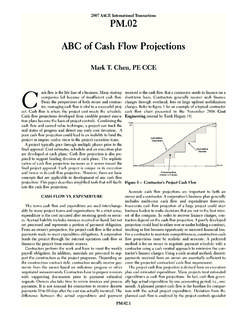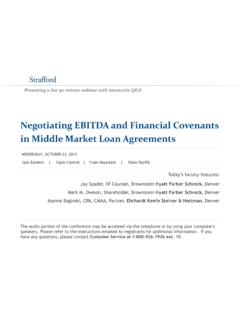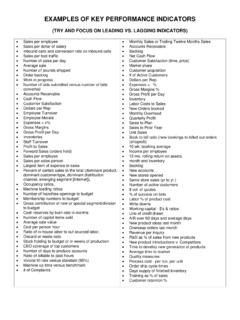Transcription of 2017 Q2 - Investor Letter - thirdpoint.com
1 Third Point LLC 390 Park Avenue New York, NY 10022 Tel 212 715 3880 October 20, 2017 Third Quarter 2017 Investor Letter Review and Outlook During the third quarter of 2017, Third Point earned in the Offshore Fund and in the Ultra Fund, bringing total returns for the year to and , respectively, compared to S&P returns of for the third quarter and for the year. We were constructive on markets coming into 2017 based in part on expectations that we would see more favorable conditions for businesses via deregulation and tax reform. Deregulation is occurring quickly and although tax reform remains in the works, we expect that markets will continue to move higher, driven by strong consumer and business confidence combined with synchronized global growth.
2 The strength in global growth is largely owed to the worldwide easing of financial conditions that started during the first quarter of 2016, catalyzed by the weakening of the US Dollar and the Fed s failure to execute on its forecasted four interest rate hikes last year. The big surprise for the markets in the past twelve months has not been political events like Brexit or Trump s election but the degree and breadth of global GDP upgrades, as shown in the chart below: ( )( )( )( ) month Trailing Global GDP Forecast Revisions Source: JP Morgan Forecast Revision Index 2 Global GDP revisions on a twelve month trailing basis are positive for the first time since the European sovereign crisis in 2011.
3 They have fueled an earnings-driven as opposed to a multiple-driven equity markets rally, especially in markets levered to growth upgrades. We believe the US has room to lead versus the rest of the world from here and while we have increased exposure to Europe overall this year, primarily through our substantial investment in Nestl , the majority of our portfolio remains in US equities. Supported by strong global GDP growth and the prospect for tax reform, S&P 500 earnings prospects are solid. Bottom-up estimates imply ~12% earnings growth next year ($146 for 2018) which would still be ~7% after the typical 5% haircut that such estimates experience as the year unfolds.
4 This is not unrealistic considering that a variety of macro indicators like the ISM and consumer confidence are consistent with double-digit forward earnings growth. While the outcome of tax reform is uncertain, it could conservatively add 5% to EPS which would put 2018 earnings growth in the double-digit zone. While the implied ~ forward price-to-earnings ratio is high by historical standards, low interest rates coupled with still solid earnings growth suggest valuations can remain high amid a tame business cycle, absent an exogenous shock. The biggest risk to our positioning and view is a recession.
5 Recessions are, by their nature, unexpected. However, we think that the risk today is low for three reasons: 1) economic growth levels are relatively high and momentum is fairly stable. When these conditions are present, recession risk is low, particularly in the near-term; 2) in the medium-term, recent inflation has been less responsive to changes in slack (the unemployment rate) than it has been historically. This lowers the chances that the Fed will need to hike aggressively, which in the past has been associated with increased recession odds if it failed to properly calibrate policy withdrawal; 3) credit growth has been subdued.
6 While there are pockets of the credit markets that pose risk, we have not seen evidence of broad-based excesses and thus do not see a systematic risk of a popping credit bubble at present. Considering these three factors and with recession models flagging low risk, we are comfortable with our positioning but vigilant in looking for data that could alter our current thesis. 3 Mapping out the course to year-end, we see more of the same conditions. While we invest a lot of time and effort in the analysis of policymaking, it doesn t appear for now that any of the incremental changes under consideration in tax cuts or rates whether or not they come to pass will materially impact the markets.
7 We expect the Fed to continue to raise rates but changes to FOMC leadership will determine the pacing. We have climbed over the market s wall of worry this year by focusing on data and facts, adhering to our process, and avoiding emotional reactions to news headlines and sentiment shifts. Backed by an understanding of the favorable global economic backdrop, we have generated profits this year through stock picking, where opportunities have been plentiful across sectors and on both the long and short sides. While our long book has been the standout, single name shorts, which account for almost 20% of equity exposure, have generated substantial alpha.
8 Our credit exposure in corporate, structured, and government is modest, and we are committed to being disciplined in this asset class, particularly when equities are this compelling. This is one of the benefits of having a bottom-up process of asset allocation. Our approach to investing at Third Point has always been to be adaptable and dynamic and, when necessary, to learn new skills necessary to excel in financial markets. When we started the firm in 1995, we were primarily a distressed debt and high-yield shop that minored in special situations such as risk arbitrage and spin-offs. During the late 1990s, we scoffed at the business models and valuations of some of the high flying tech stocks of the day and eventually profited by taking short positions in them before the bubble popped.
9 More recently, our equity investment framework has drawn us to larger market capitalizations and we have learned to pay up for certain higher-quality companies with market-dominating positions. We continue to invest in companies where we see great potential hamstrung by poor management or governance but we have developed a way of working constructively with boards and management teams to effect change and drive sustainable value for all shareholders. In credit, we have added expertise in structured credit and sovereign debt since the financial crisis, allowing us to invest successfully during dislocations in those markets.
10 Our ABS credit expertise has also positioned us to invest in 4 the equities as well as structured products of several promising fintech companies. Over the past year, we have developed an internal data science team and hired a full time practitioner of the dismal science of market strategy. Perhaps the most important development has been the evolution of the firm s culture which, among other things, emphasizes collaboration, transparency, candor, and a dedication to supporting one another in our efforts to improve our thought processes and skills. On a broad level, this growth of our skill set across a spectrum of securities and geographies has been part of an overall commitment to process improvement and Kaizen.



